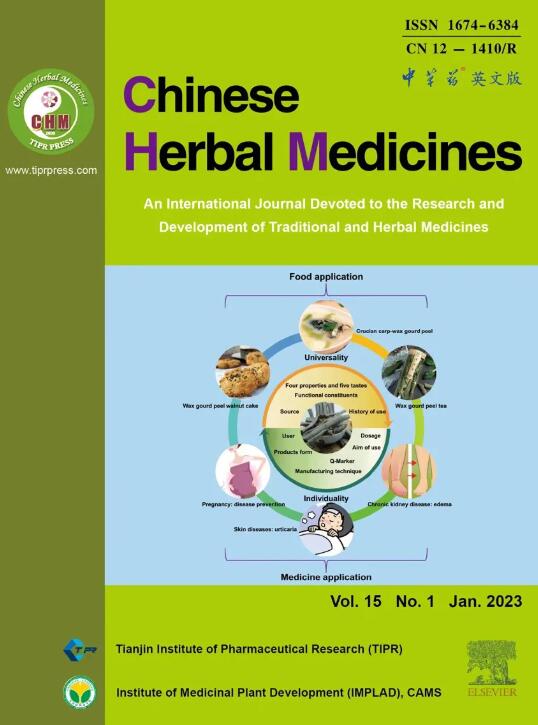Research and utilization status of Lophatherum gracile: A medicinal and food homologous plant
IF 8.9
4区 医学
Q1 CHEMISTRY, MEDICINAL
引用次数: 0
Abstract
Lophatheri Herba (Danzhuye in Chinese) is derived from the dried stems and leaves of Lophatherum gracile and has a long history of use as a medicinal and food source. Flavonoids and phenolic acids are the main active ingredients in Lophatheri Herba, which produce diuretic, anti-inflammatory, and antipyretic effects. Flavonoid glycosides and hydroxybenzoic acids are respectively the main structure in 44 flavonoids and 16 phenolic acids obtained from Lophatheri Herba. Modern pharmacological studies have found that the main chemical constituents of Lophatheri Herba play important roles in anti-inflammatory, cardioprotective, hepatoprotective and hypoglycaemic effects. Studies have demonstrated that flavonoid monomers, for example, luteolin, isoorientin, luteolin-7-O-β-D-glucoside and apigenin are more effective in exerting the above pharmacological effects. In addition, Lophatheri Herba is used in different food products as the main ingredient or as an accessory. This review describes Lophatheri Herba in terms of its chemical composition, pharmacological effects and efficacy, food development and applications, and clinical utility, and discusses the problems facing its use. This study provides valuable ideas and a scientific basis for the future development and use of L. gracile.
药用和食用同源植物细棘草的研究与利用现状
Lophatheri Herba (dan竹叶)是由Lophatherum gracile的干茎和叶提炼而成,作为药用和食物来源有着悠久的历史。黄酮类化合物和酚酸类化合物是牛膝草的主要有效成分,具有利尿、抗炎、解热等作用。从枇杷草中分离得到的44种黄酮类化合物和16种酚类化合物的主要结构分别为黄酮类苷和羟基苯甲酸。现代药理学研究发现,罗芬草的主要化学成分具有抗炎、保心、保肝、降血糖等重要作用。研究表明,木犀草素、异荭草苷、木犀草素-7- o -β- d -葡萄糖苷、芹菜素等类黄酮单体更能发挥上述药理作用。此外,Lophatheri Herba在不同的食品中用作主要成分或辅助成分。本文从化学成分、药理作用和功效、食品开发应用、临床应用等方面综述了罗氏草的研究现状,并对其应用中存在的问题进行了讨论。本研究为今后的开发利用提供了有价值的思路和科学依据。
本文章由计算机程序翻译,如有差异,请以英文原文为准。
求助全文
约1分钟内获得全文
求助全文
来源期刊

Chinese Herbal Medicines
CHEMISTRY, MEDICINAL-
CiteScore
4.40
自引率
5.30%
发文量
629
审稿时长
10 weeks
期刊介绍:
Chinese Herbal Medicines is intended to disseminate the latest developments and research progress in traditional and herbal medical sciences to researchers, practitioners, academics and administrators worldwide in the field of traditional and herbal medicines. The journal's international coverage ensures that research and progress from all regions of the world are widely included.
CHM is a core journal of Chinese science and technology. The journal entered into the ESCI database in 2017, and then was included in PMC, Scopus and other important international search systems. In 2019, CHM was successfully selected for the “China Science and Technology Journal Excellence Action Plan” project, which has markedly improved its international influence and industry popularity. CHM obtained the first impact factor of 3.8 in Journal Citation Reports (JCR) in 2023.
 求助内容:
求助内容: 应助结果提醒方式:
应助结果提醒方式:


